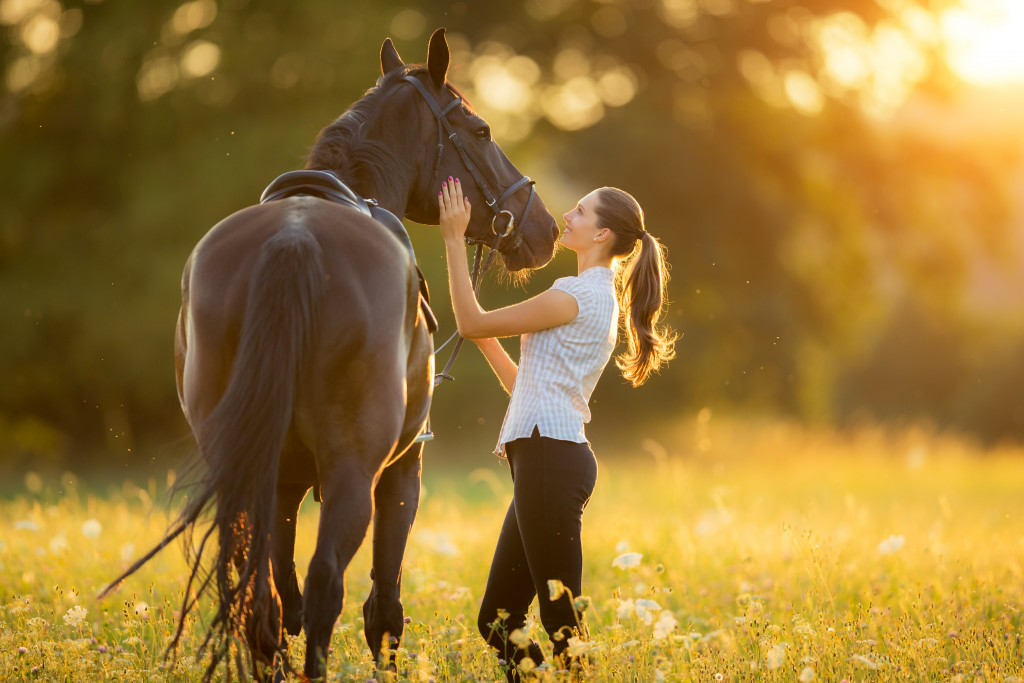Age is just a number, and the same adage is true when it comes to learning to ride a horse. You might have always dreamed of riding a horse but didn’t just get the time and the resources to do it. Now that you finally have the time and the money to foot the bill, you are worrying that it might be too late.
Well, as it turns out, you have nothing to worry about. It is never too late to learn to ride a horse, as long as you are physically well and fit. What’s even better is that you now have enough money to invest in your horse tacks, such as your saddle and horse reins. Do not let age deter your desire to learn how to ride a horse. However, you must also be practical. Here are some things that you should consider before you mount your first horse:
Visit your doctor
While age should not stop you from learning and enjoying new things, it pays to be careful. Talk to your doctor about your plans. He or she can give you advice on how to manage your aging body. If you have conditions such as arthritis, your doctor can also help you with how to prepare your body for horseback riding. It is best to visit a doctor who knows about your medical history so he or she can help you better.
If, for instance, your doctor forbids you to proceed with your horse-riding plans, do not ignore it. You might have a current or past injury or condition that compromises your health and safety.
Prepare your body
Mature bodies are not as agile as they used to be. And that is perfectly normal. Riding a horse is a demanding physical activity that you must prepare your body for. It will take more than your mental determination to be able to do it right. The horse weighs around 1,000 lbs. Add to that the weight of your horse tacks, and you have a lot of loads to work on.
Another thing that you must remember is that your brain to muscle communications might not be as fast as when you were younger. This can result in lesser accuracy and poor balance.
Here are some exercises that you can do to prepare your body and to make it more flexible and strong:
Side Bends
This exercise increases the flexibility of your hips.
Forward Lunges (with or without support)
Use this exercise as a warm-up for your legs. It also helps strengthen the legs. You can use a chair if you have some difficulties during your first tries.
Squats (with or without support)
Use this exercise to increase the strength of your legs, hips, and back muscles. You can use a chair for support if you have some difficulties during your first tries. Remember not to push your body too hard. If your body can only do fifteen squats a day, do not push your body to do thirty. Push your body gradually and increase the number of squats daily.
Prepare your safety gear
Falling off a horse might be one of your biggest fears. Your safety gear will not stop a fall, but it can reduce the risks of injuries. Here are the gears that you should have in your horse-riding arsenal.
Helmet
A high-quality and durable helmet should be at the top of your gear investment. Falling off a horse can lead to head injuries, but you can protect your head with an ASTM approved riding helmet. Wear it every time you mount your horse.
Boots
Choose tall boots. Tall boots can protect you from three things: slipping your foot through your stirrups, being trampled on, and chafing or scraping your legs while you ride.
Safety Vests
A high-quality safety vest will protect your body, especially your torso, in case you fall off your horse. It protects your spine, ribs, as well as your internal organs.
Safety Stirrups
A safety stirrup has an added feature that prevents your foot from slipping through in case you fall off your horse.
Hand Gloves. Hand gloves give your hands protection against blisters. They also lend you extra grip while you hold on your horse reins.
Take some riding lessons

Now, it might be too late to train to join the Olympics, but you can take lessons for your safety. You also gain more confidence when you learn from experts. Here are the things that you can learn when you enroll in horse-riding classes:
- The psychology of your horse
- Correct horse handling
- Correct horse leading
- Correct riding posture
- Proper horse grooming
- Proper horse care before and after the ride
- Correct use of horse tacks
There are many advantages to learning a new skill, and your age should not stop you from doing so. On top of learning a new skill, horse-riding also helps relieve stress, and it gives you a physical and mental work-out. Just remember to take extra precautions whenever you ride a horse.
